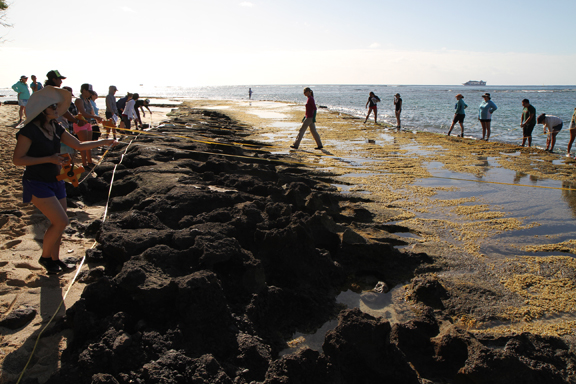Our Project In Hawaiʻi’s Intertidal (OPIHI): Examining change over time
PRINCIPAL INVESTIGATOR: Joanna Philippoff
Co-INVESTIGATORS: Heather Spalding, Craig Nelson
Graduate Fellow: Patrick Nichols

Although a culturally and ecologically important ecosystem, the intertidal is vulnerable to climate change, species invasions, overharvesting, and land-use practices. However, the intertidal zone of tropical islands has been poorly studied. This is especially true in Hawaiʻi’s intertidal due to seasonal wave activity, a limited low tide window, and a modest tidal range—all of which limit access to intertidal areas. OPIHI enables the collection of intertidal data that would otherwise be too costly, time-consuming, or labor-intensive. Over the course of a year-long OPIHI undergraduate program interns engage in the complete scientific process and, in partnership with collaborating scientists, collect meaningful data that is used to characterize the Hawaiian intertidal to determine if and how intertidal organisms’ abundance and diversity is changing over time. Projects include mapping groundwater in intertidal systems and examining how groundwater affects the distribution of algae and invertebrates, examining previously unknown diet relationships between intertidal herbivores and algae, and exploring how excess human-derived nutrients and invasive species have affected intertidal biodiversity over time. Interns also engage in outreach within the communities who live and are invested in their research sites, and participate as expert intertidal researchers in an ongoing monitoring program with teachers and K–12 students at rocky intertidal areas statewide. Our overall goal is to increase awareness and knowledge of the intertidal ecosystem in Hawaiʻi as well as identify potential threats to these systems by creating partnerships between undergraduates, researchers, and community groups engaged in the study and protection of this valuable ecosystem.
Watch a podcast on this project here.

